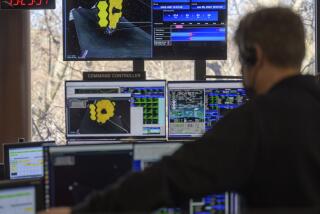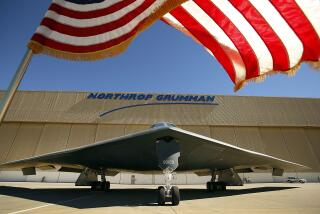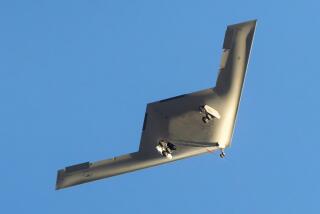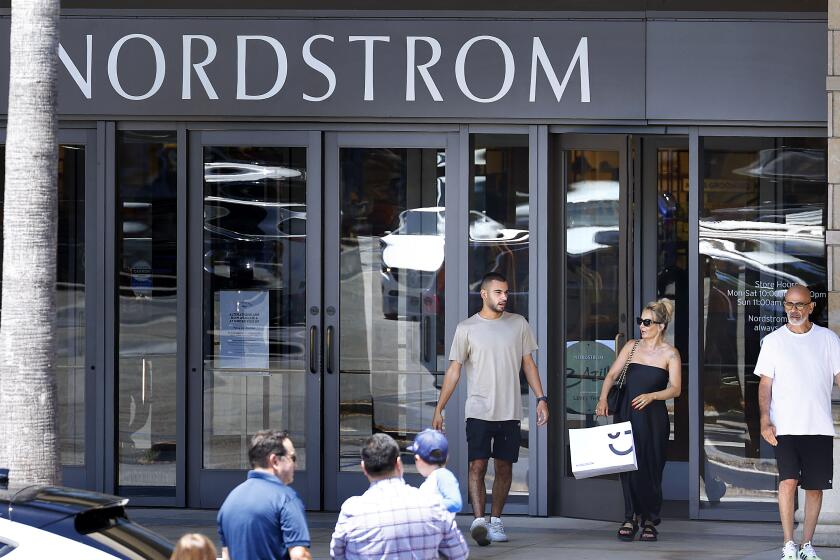Northrop Moves to Cut Cost of B-2 Bombers
- Share via
Amid growing congressional criticism over the $75-billion cost of the B-2 Stealth bomber, Northrop has launched an intensive effort to cut the bomber’s cost that will involve such wide-ranging measures as layoffs, a trimmed-down inspection program and reduced security.
The cost-cutting program, detailed in a series of internal Northrop documents obtained by The Times, appears to be a dramatic effort by the aerospace firm to protect the program from a possible Pentagon or congressional decision to scale back or even terminate production.
If the current plan to buy 132 bombers is reduced, then the already high cost of each bomber could rise to such a politically unacceptable level that the entire program would be jeopardized.
Northrop officials acknowledged in interviews Thursday that the cost-cutting effort is a response to the increased public scrutiny focused on the program.
“In the big picture . . . the public debate has been on the cost,” Oliver Boileau, president of Northrop’s B-2 division, said. “It is prudent for management to always try to drive costs down. We are doing our part.”
A memorandum to Boileau in January from the B-2’s vice president for finance, K.J. Berchtold, indicated company officials are sensitive to the political skittishness over the B-2’s rising cost. “Program affordability will be the major factor in this (cost-cutting) assessment,” he wrote.
At the same time, other documents make clear that another goal is boosting the company’s profits on the program from their current anemic level.
Boileau said no specific goal has been set, but he believes it is possible to make reductions significant enough to affect the overall cost of the program.
Cost-cutting could not happen soon enough. Sen. Alan Cranston (D-Calif.), who is leading a fight to kill B-2 production, has charged that the planes could cost as much as $1.95 billion apiece if the government reduces the overall number produced and stretches out the program. Meanwhile, House Armed Services Chairman Les Aspin (D-Wis.) has proposed using B-2 production funds for other defense purposes.
Northrop has long insisted that its B-2 operation in Pico Rivera and Palmdale is a model of efficiency, but the current cost-cutting effort targets dozens of areas for potential cost savings.
“We are examining from the bottom up all of our activities,” Boileau said.
As many as 500 of the 12,000 Northrop B-2 employees could be laid off, but the final numbers are still being worked out, he said.
Northrop hired Boileau to take over the B-2 program last December. An executive with a tough reputation, Boileau previously had worked at General Dynamics, Boeing and RCA.
After four months at Northrop, Boileau said he believes the overall B-2 program is going well. Although Boileau is directing the cost-cutting review council, he also described as “incorrect” the tone and substance of the public debate over the B-2’s cost.
“We should look at the value of the airplane to protect our civilization,” Boileau said. “I accept you can divide the program cost by the number of airplanes and come up with a cost. I don’t think that is very useful.”
No matter how much Northrop cuts costs at this stage, the company may not be able to salvage the program in the face of strong political opposition.
“I think there would have to be a very, very dramatic cost adjustment in the program to have any effect at all,” a key House Armed Services staff member said Thursday. “And I think there is very significant doubt in Congress about why you need 132 of these anyway. It may be too little and too late.”
Another observer differed slightly. “What Northrop is doing is politically right, but it doesn’t address the overall problem on the hill,” said Donald Hicks, a former Pentagon official and a former Northrop executive. “The overall problem can only be addressed by strong support from (Defense Secretary Dick) Cheney and (President) Bush.”
Boileau said the cost-cutting effort includes attempting to make fewer inspections of parts in the factory by having employees inspect their own work--part of a production system known as statistical quality control. Another measure involves cutting security, which can be costly on a highly classified program like the B-2.
“Security requirements have been reduced as far as the government wants to go,” Boileau said.
As part of its cost-cutting effort, Northrop hopes to book higher profit margins on the B-2 program, according to the internal documents. In the current year, for example, the firm projected earning a 6% profit margin but more recently has increased its goal to 9%. Despite its size, the B-2 program has encountered unexplained problems that resulted in large writeoffs against profits.
Northrop is attempting to cut the planned level of spending for capital assets--such as plant facilities and equipment--by $256 million between 1989 and 1996 from the level planned two years ago. In 1989 alone, it cut capital assets by 50%. In part, Boileau said, those reductions result from the slower pace of the B-2 program and changes in the timing of spending.
Boileau said the company will consolidate its three computer centers at Pico Rivera into two centers, though there will not be a reduction in the overall computer capability. Northrop is believed to have more than one Cray supercomputer for the B-2--the precise number is still classified--but there will be no reductions in Crays, Boileau said.
In addition, the company is cutting travel expenses, reducing outside contracting for labor and collecting $30 million from Boeing. It successfully recovered $3 million the Air Force withheld several years ago when the B-2 division’s purchasing system failed to receive approval. The system has since been approved and funded.
Boileau said the Air Force is not currently withholding any funds on the B-2 program for performance problems or other reasons.
More to Read
Inside the business of entertainment
The Wide Shot brings you news, analysis and insights on everything from streaming wars to production — and what it all means for the future.
You may occasionally receive promotional content from the Los Angeles Times.











